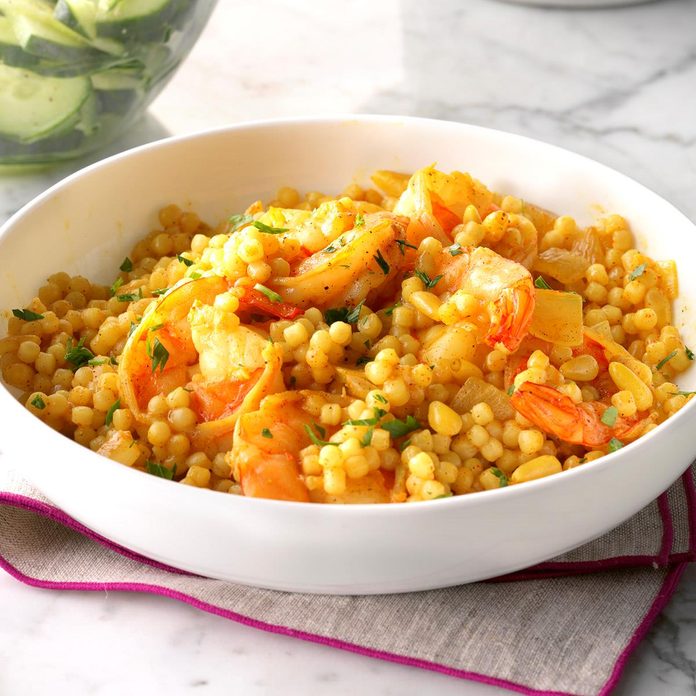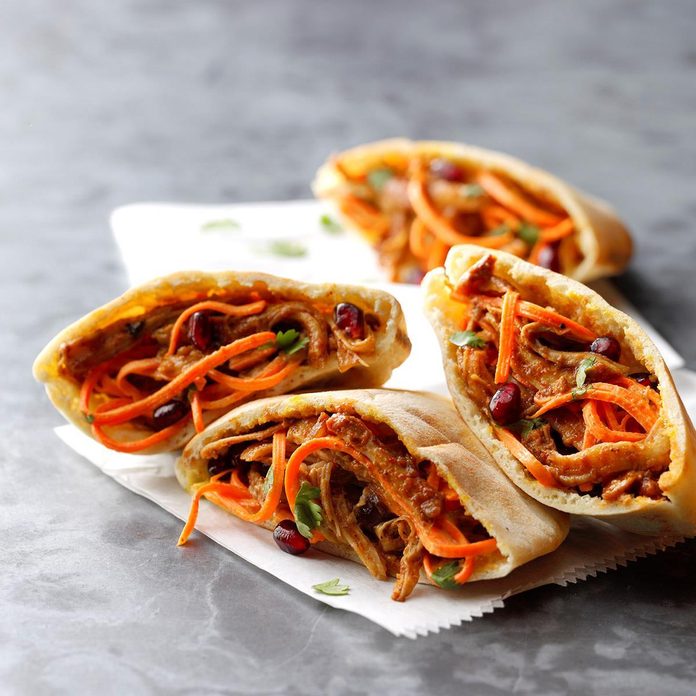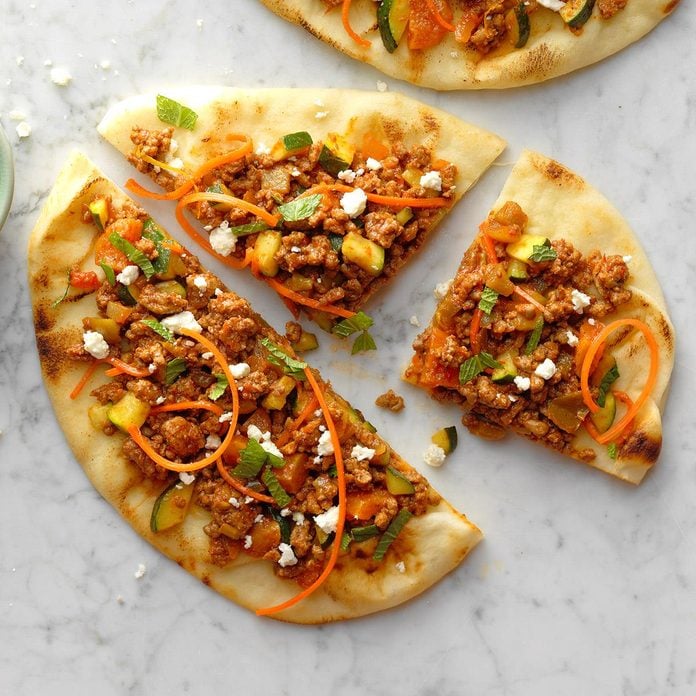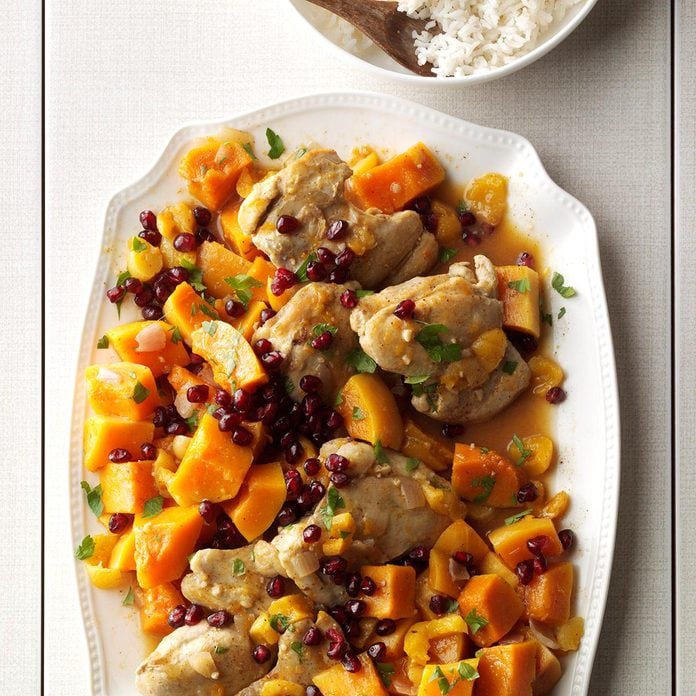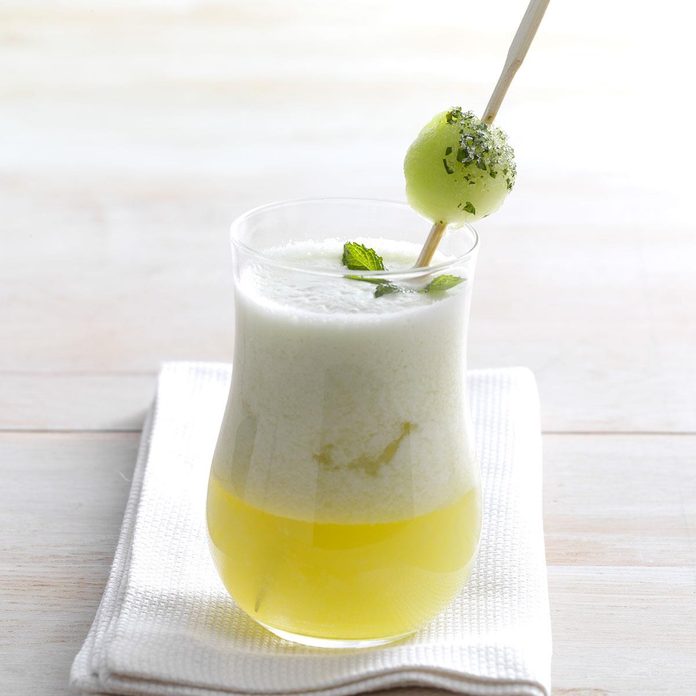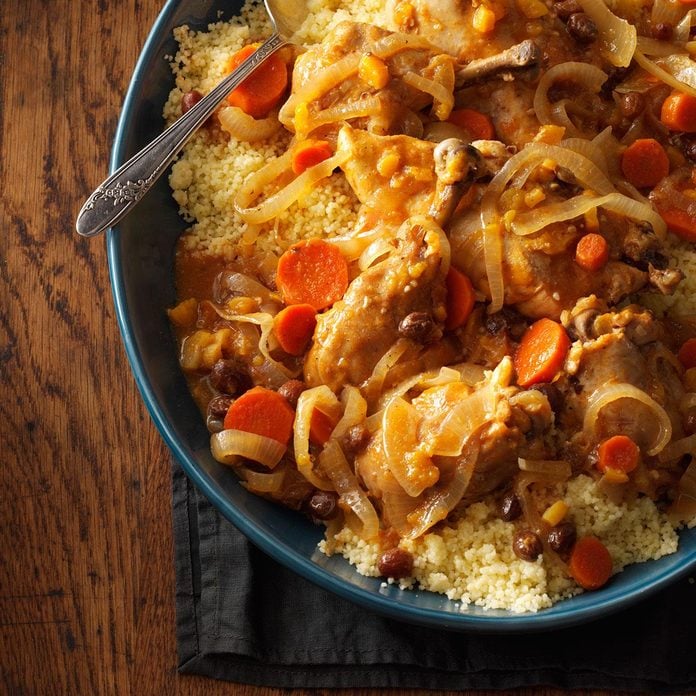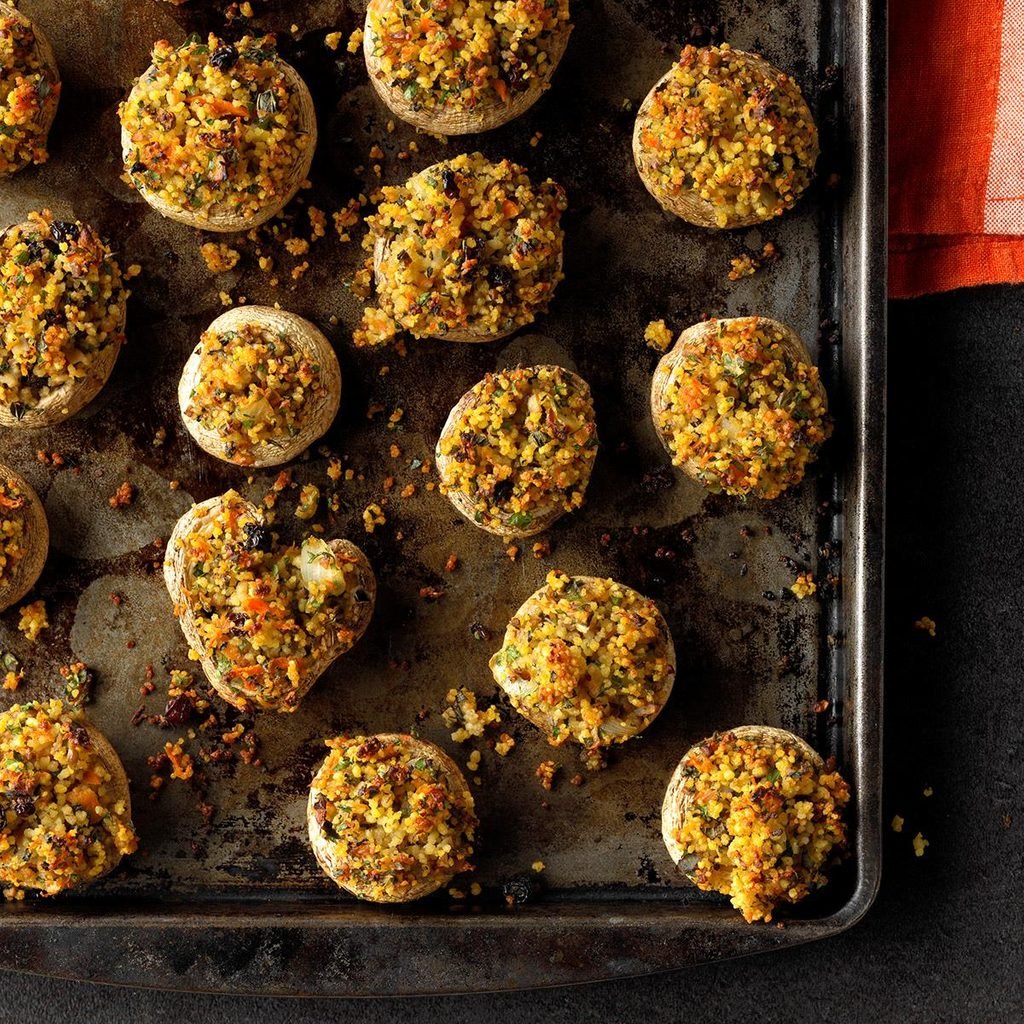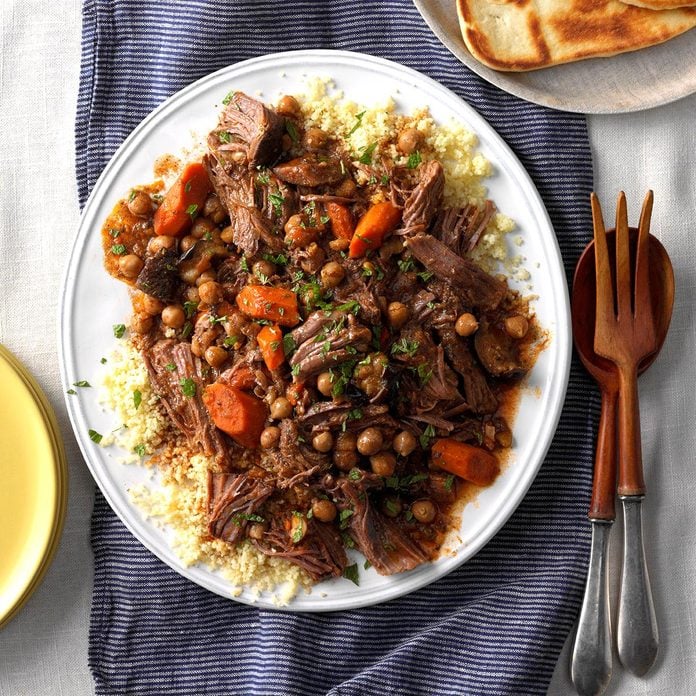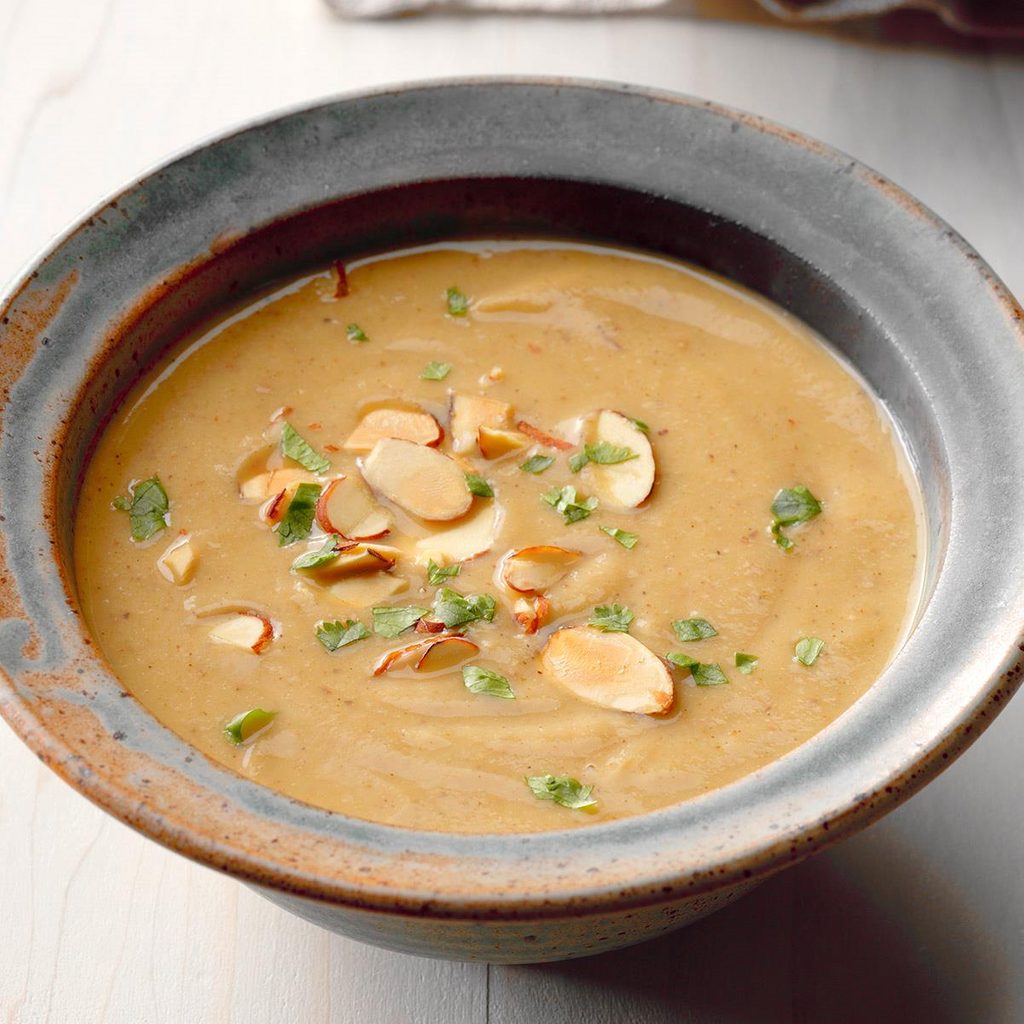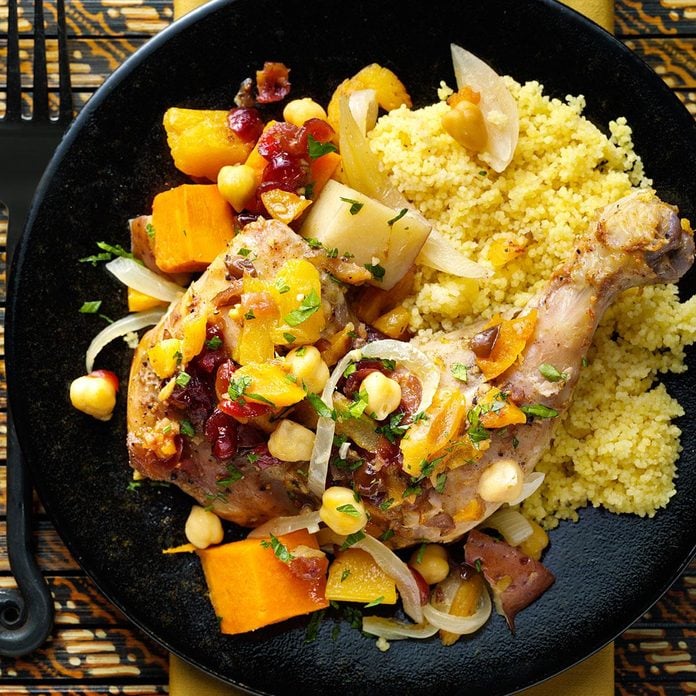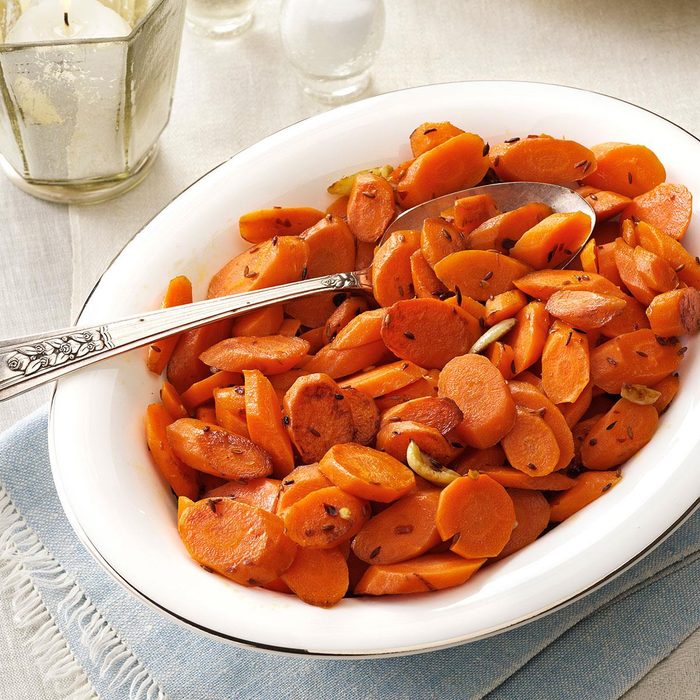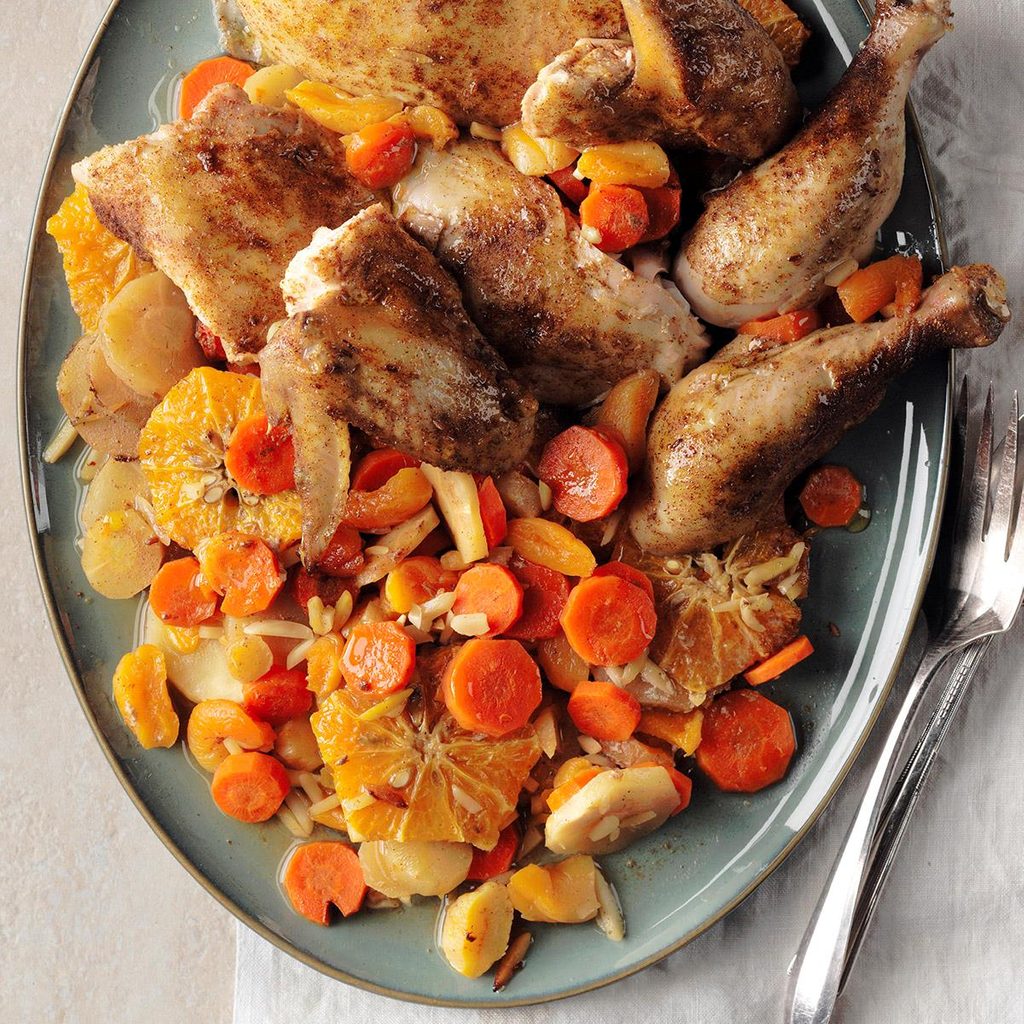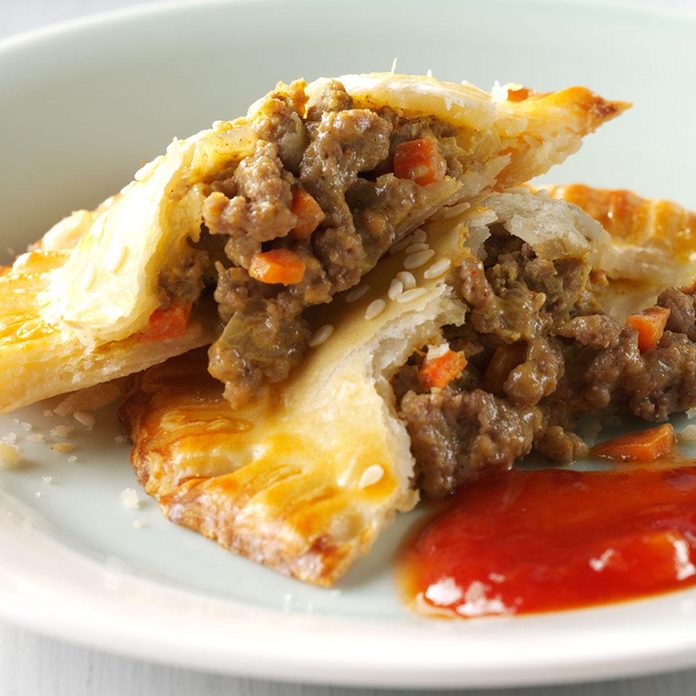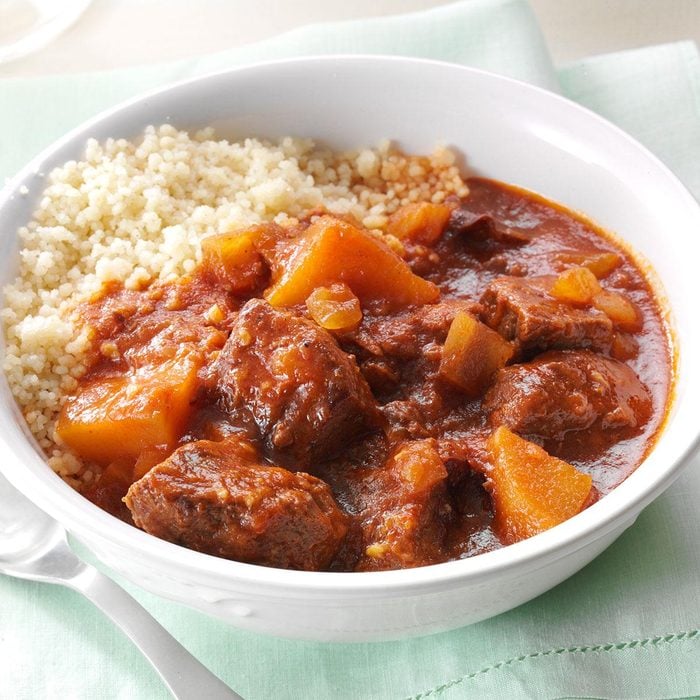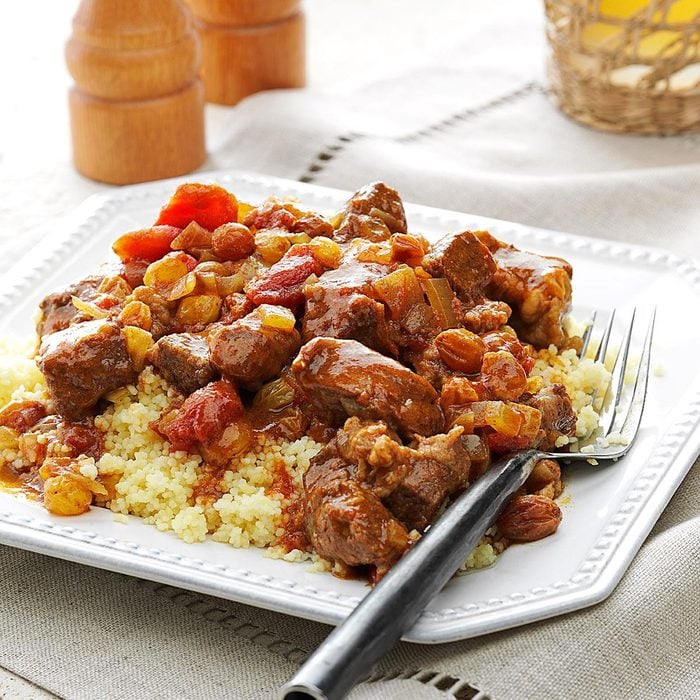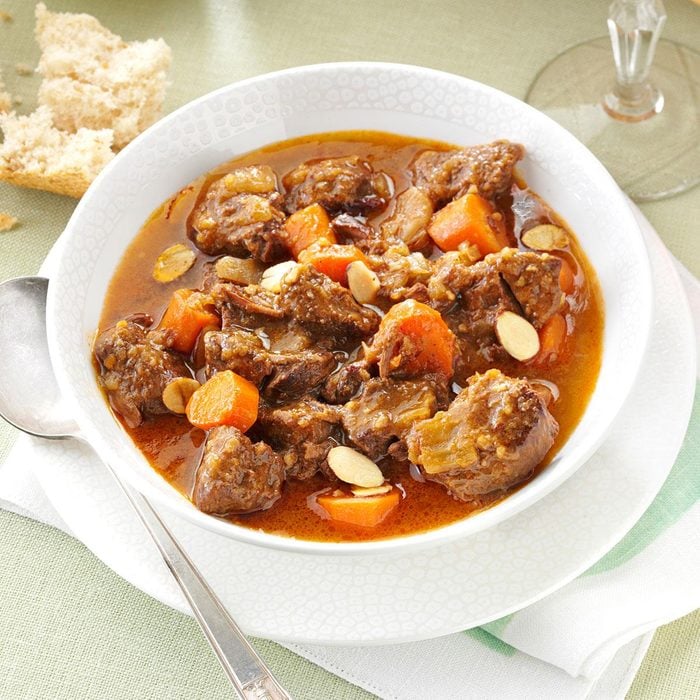Here’s Why You Should Add Moroccan Food to Your Menu ASAP
Updated: Dec. 17, 2021
Curious about one of the fastest-growing food trends of the year? From the spices to stock up on to the classic dishes to start with, here's your learn-it-and-love-it guide to exploring the robust flavors of Moroccan food.
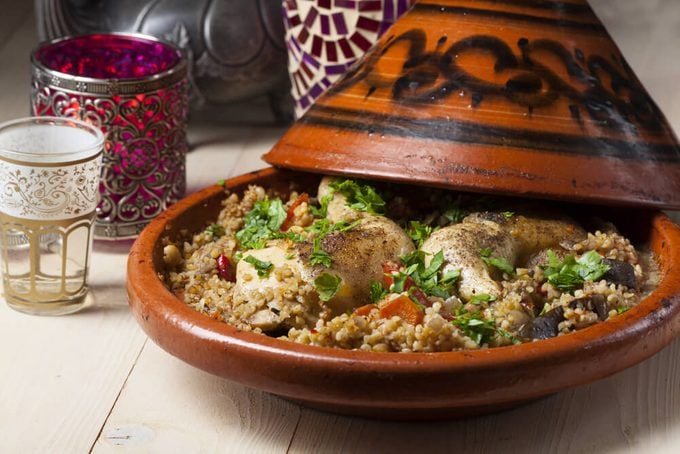
Moroccan cuisine, with its incredible blend of spices, sweet-and-savory flavor profile and beautifully textured dishes, has been touted as one of the top food trends to watch for this year (and, you know, maybe just a little bit easier to adopt than eating charcoal). But once you try its irresistible flavor combinations, you’ll see quickly why it’s one trend you won’t have to worry about going out of style for years to come.
Traditional Moroccan cooking is a blend of the cuisines and customs of an incredible mixing pot of cultures from around the world. Given the country’s location on the northern tip of Africa, with coastlines on both the Atlantic Ocean and Mediterranean Sea, its flavors are mainly influenced by both its European and Mediterranean neighbors, but traditional African, Middle Eastern and even South American flavors make their way into favorite Moroccan dishes, too.
If you’re curious to try the multi-layered, robust flavors of Moroccan cooking, here’s where to start. We’re introducing you to the spices, ingredients and cooking styles of this uniquely irresistible global cuisine.
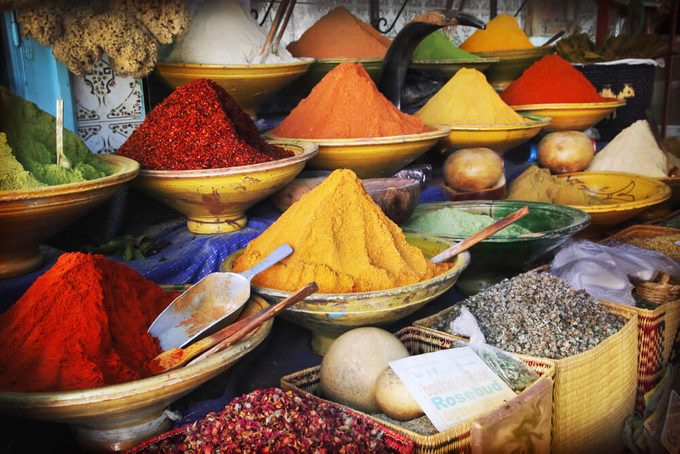
The Spices
When talking about Moroccan cooking, naturally the first place to start is with spices. A fixture on the ancient spice route, the country has adopted the abundance of globally imported spices from traders around the world, which have cozied their way into local kitchens for centuries. Its dishes are layered with sweet and spicy, earthy and bright flavors that reflect the vast array of spices available in local markets. It’s best to use whole spices that are freshly ground just before cooking, if possible. But if you buy them pre-ground, that’s perfectly fine—just make sure they’re under a year old to ensure they’re fresh and will pack the most flavor.
If you want to cook like the Moroccans do, keep these 10 essential spices in your pantry:
- Cumin
- Saffron
- Turmeric
- Ground ginger
- Cardamom
- Paprika
- Hot red peppers
- Cardamom
- White or black pepper
- Cinnamon
But if you’re just testing the Moroccan-food waters and don’t want to break the bank in the spice aisle, look for a blend like ras el hanout (often labeled as “Moroccan spice blend” at many grocery stores). Its name translates to “the best of the shop,” and mostly likely will include a mixture of any of the essential ground spices, like cumin, cinnamon, ginger, peppers and turmeric. Or buy a few of the essentials and make your own Moroccan spice blend.
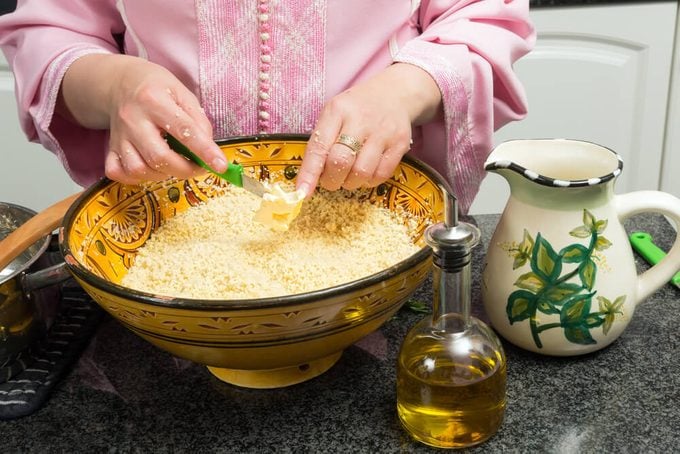
The Ingredients
While a blend of varied spices gives Moroccan food its uniquely layered flavor profile, a few standout ingredients create the backbone of many of its most iconic dishes. Visit any home in Morocco, and you can be sure to find any of the following ingredients that make their way into anything from classic tagine to saucy roast chicken to flaky baklava. Some of the most widely used are:
- Couscous
- Garlic
- Parsley
- Preserved lemons
- Olives
- Meats (chicken and lamb are most prevalent)
- Sesame seeds
- Cilantro
- Onions
- Almonds
- Honey
- Orange flower water
- Dried fruits like apricots, dates, raisins and figs
- Harissa (learn more about this deep red paste with a big, spicy kick)
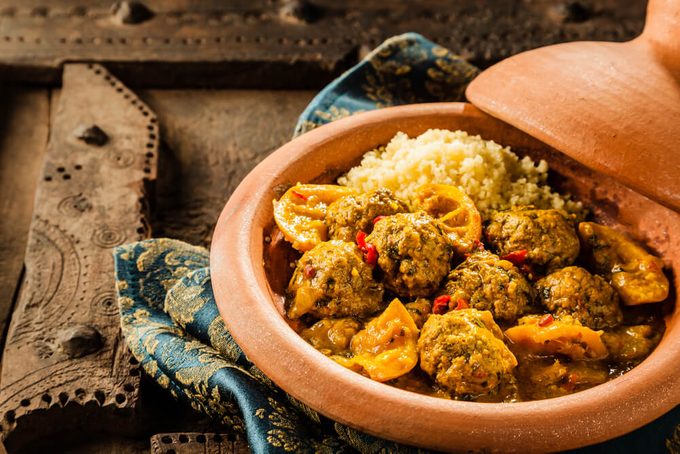
The Iconic Dishes
The spices and ingredients above come together to create the most treasured, authentically Moroccan dishes made in kitchens for generations. The flavors blend into complex layers that reveal sweetness, spiciness, richness and earthiness—bland, these recipes are not. Here are a few of the most quintessential Moroccan dishes:
- Couscous: Often referred to as the national dish of Morocco, couscous is made of teeny-tiny balls of wheat semolina, steamed so they’re soft and fluffy. You’ll see couscous show up in everything from salads to main dishes, and it’s often cooked with vegetables, spices and dried fruit.
- Tagine: Probably the most iconic Moroccan dish of them all, this slow-cooked stew is usually made with chicken or lamb, plus a variety of vegetables, dried fruits, nuts and spices to give it loads of flavor and texture. After its hands-free, low, slow cook, the meat and vegetables come out soft, tender and infused with bold flavor—and it’s best enjoyed scooped up with a chewy piece of fresh-baked flatbread. Want to make it the authentic way? Cook it in a tagine, the conical clay pot the beloved dish was named after.
- Harira soup: This tomato-based soup is hearty enough to be a meal on its own, often filled with meat, vegetables, lentils and chickpeas. Because of its nutrition-packed profile, Harira is often enjoyed to break the day’s fasting during the month of Ramadan.
- Bastilla: This sweet and savory pie is often served between salad and tagine at special dinners. It’s traditionally made of pigeon, but chicken has become a popular substitute in modern times. The shredded chicken is mixed with beaten eggs and spices, topped with fried, crushed almonds and wrapped with an incredibly light, flaky pastry shell (similar to phyllo). A dusting of confectioners’ sugar and cinnamon gives the pie a touch of sweetness on top.
- Chicken with preserved lemon: Often slow cooked in a tagine, this dish gets a wallop of bright flavor from the tangy preserved lemons, plus a kick of salty goodness from olives. While cooking, it develops a rich, spiced sauce, which is delicious soaked up with fluffy couscous or flatbread.
If you’re interested in trying the unique flavors of Moroccan cooking, the easiest way to familiarize yourself is to just start cooking! Stock up your spice rack, grab a few essential ingredients and start experimenting. The best way to start is with these Moroccan-inspired dishes that are easy enough to whip up in your own kitchen—even without a tagine.


